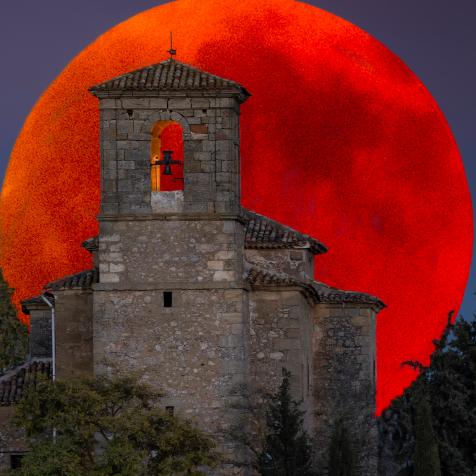
From the Moon to the Oval Office
As homage to the past Apollo Missions and a nod to the upcoming Artemis Program, NASA recently loaned the White House a lunar sample that has been placed in the President’s Oval Office.
You can learn more about the Apollo missions and beyond on discovery+.
NASA astronauts Neil Armstrong and Buzz Aldrin of Apollo 11 first stepped foot on the lunar surface on July 20, 1969. From Apollo 11 to the end of Apollo 17, NASA completed six crewed missions to the moon and landed a total of twelve astronauts on the lunar surface.

NASA
Astronaut Buzz Aldrin walks on the surface of the moon near the leg of the lunar module Eagle during the Apollo 11 mission. Mission commander Neil Armstrong took this photograph with a 70mm lunar surface camera.
During Apollo 17, known as the final moon landing of NASA’s Apollo program, NASA astronauts Ronald Evans, Harrison Schmitt, and Eugene Cernan carved out a piece of rock as a sample of the lunar surface from a large boulder at the base of the North Massif in the Taurus-Littrow Valley. A piece of this particular rock is now on display in the Oval Office and holds deep significance for the past and future of human presence on the moon. It is known as “Lunar Sample 76015,143.” Evans, Schmitt, and Cernan were the last NASA astronauts to step foot on the lunar surface, but they will not be the final ones as the Artemis program is working towards landing the next man and the first woman by 2024.

NASA
Scientist-astronaut Harrison H. Schmitt, Apollo 17 lunar module pilot, collects lunar rake samples at Station 1 during the mission's first spacewalk at the Taurus-Littrow landing site. This picture was taken by astronaut Eugene A. Cernan, commander.
The moon rock is on loan from the Lunar Sample Laboratory Facility at NASA’s Johnson Space Center in Houston. It weighs less than a pound and was collected in 1972. The remainder of the sample continues to be used for scientific research. NASA concluded that the moon rock is a 3.9-billion-year-old sample formed during the last large impact event on the nearside of the lunar surface. The one on display contains tiny craters that were formed by micrometeorite impacts from being sandblasted over millions of years.

Charles Meyer/NASA Johnson
NASA photo S87-34948 shows sample 76015,143 after being prepared for public display. This portion weighs 333 grams. We are seeing the natural surface. This view was taken from a view point slightly to the left of the prior image. The edge of the larger of two saw cut surfaces is on the left.
It’s an out of this world experience for Lunar Sample 76015,143 to be seen in the Oval Office!


















